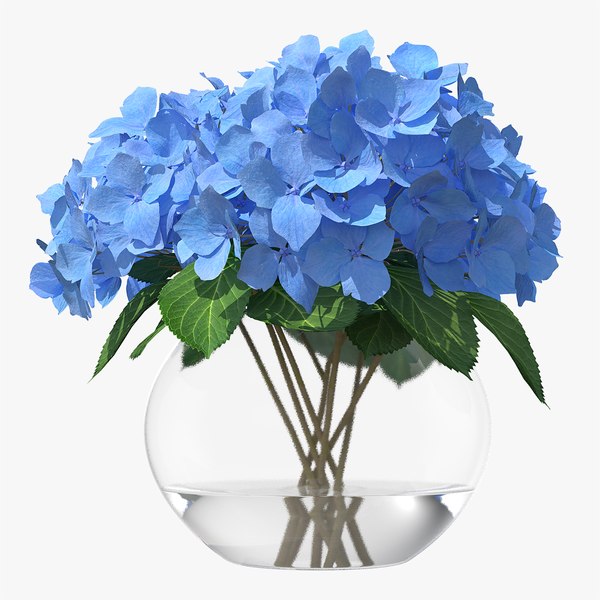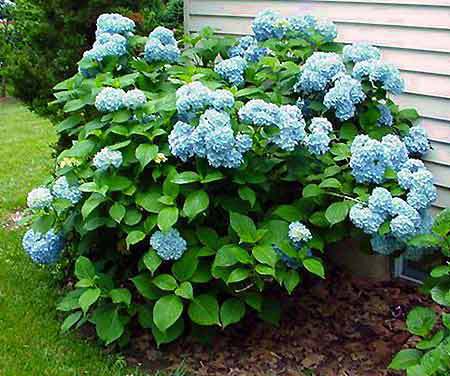Nikko Blue Hydrangea: The Ultimate Guide To Growing This Stunning Shrub
Nikko Blue Hydrangea: The Ultimate Guide to Growing This Stunning Shrub
Nikko Blue hydrangeas are one of the most popular varieties of hydrangeas, and for good reason. They are known for their large, blue flower heads that bloom in late spring and summer. Nikko Blue hydrangeas are relatively easy to grow, and with proper care, they can thrive for many years.
In this blog post, we will discuss everything you need to know about growing Nikko Blue hydrangeas, including:
- Choosing the right location
- Planting and care
- Fertilizing and watering
- Pruning
- Overwintering
- Troubleshooting
Choosing the right location
Nikko Blue hydrangeas prefer partial shade, but they can also tolerate full sun in cooler climates. The ideal location for a Nikko Blue hydrangea is in an area that receives morning sun and afternoon shade. The soil should be rich and well-drained.
Planting and care
Nikko Blue hydrangeas should be planted in the spring or fall. When planting, dig a hole that is twice as wide and as deep as the root ball. Backfill the hole with soil and water well.
Nikko Blue hydrangeas need regular watering, especially during the first year after planting. Water deeply once a week, or more often during hot, dry weather.
Fertilize Nikko Blue hydrangeas in the spring with a balanced fertilizer. You can also use a fertilizer specifically designed for hydrangeas.
Pruning
Nikko Blue hydrangeas should be pruned in the spring, after the flowers have faded. Prune to remove dead, diseased, or damaged branches. You can also prune to shape the shrub.
Overwintering
In colder climates, Nikko Blue hydrangeas may need to be protected from winter cold. Mulch the root area with a layer of leaves or pine needles. You may also need to cover the shrub with a burlap sack or other protective covering.
Troubleshooting
If your Nikko Blue hydrangea is not blooming, it may be getting too much sun or not enough water. It may also be a nutrient deficiency.
If the leaves of your Nikko Blue hydrangea are turning yellow, it may be a sign of chlorosis. Chlorosis is caused by a lack of iron in the soil. You can treat chlorosis by applying an iron chelate fertilizer.
Conclusion
Nikko Blue hydrangeas are a beautiful and easy-to-grow shrub that can add a touch of elegance to any garden. With proper care, they will thrive for many years.
If you're looking for a beautiful and easy-to-care-for hydrangea, the Nikko Blue is a great choice. These stunning flowers are known for their deep blue color, which can be enhanced by the pH of the soil. If you live in an area with acidic soil, your Nikko Blue hydrangeas will be a vibrant blue. If your soil is more alkaline, the flowers may turn pink or even red.
No matter what the color, Nikko Blue hydrangeas are sure to add a touch of elegance to your garden. They're also relatively low-maintenance, so you can enjoy their beauty without a lot of work.
To learn more about Nikko Blue hydrangeas, I recommend visiting . This website has a wealth of information about these beautiful flowers, including how to plant, care for, and propagate them. You can also find beautiful photos of Nikko Blue hydrangeas in bloom.
FAQ of nikko blue hydrangea
Q: What are the care requirements for Nikko blue hydrangea?
A: Nikko blue hydrangeas require full sun to part shade and prefer moist, well-drained, fertile, acidic soil. In hot climates, hydrangeas will do best with some shade. If you have alkaline soil, be sure to amend your soil to maintain the deep blue color. Water your hydrangeas regularly, especially during the summer months. Fertilize your hydrangeas in the spring and fall with a balanced fertilizer. Deadhead your hydrangeas regularly to encourage new blooms.
Q: How do I make my Nikko blue hydrangeas blue?
A: The color of hydrangeas is affected by the acidity of the soil. In alkaline soil, hydrangeas will bloom pink or red. To make your Nikko blue hydrangeas blue, you need to acidify the soil. You can do this by adding aluminum sulfate to the soil. Mix ¼ oz of aluminum sulfate with a gallon of water and soak the soil surrounding your hydrangeas in the spring, as soon as the plant begins to grow.
Q: Why aren't my Nikko blue hydrangeas blooming?
A: There are a few reasons why your Nikko blue hydrangeas might not be blooming. One possibility is that the plant is not getting enough sunlight. Hydrangeas need at least 6 hours of sunlight per day. Another possibility is that the plant is not getting enough water. Hydrangeas need regular watering, especially during the summer months. Finally, the plant may not be getting enough nutrients. Fertilize your hydrangeas in the spring and fall with a balanced fertilizer.
Q: How do I prevent my Nikko blue hydrangeas from getting brown leaves?
A: Brown leaves on hydrangeas can be caused by a number of factors, including pests, diseases, and environmental stress. If your hydrangeas are getting brown leaves, it is important to first identify the cause of the problem. Once you have identified the cause, you can take steps to prevent it from happening again. For example, if the brown leaves are caused by pests, you can treat the plant with an insecticidal soap or neem oil. If the brown leaves are caused by diseases, you can treat the plant with a fungicide.
Q: How do I propagate Nikko blue hydrangeas?
A: Nikko blue hydrangeas can be propagated by rooting stem cuttings. To take a stem cutting, choose a healthy stem that is about 6 inches long. Make a clean cut just below a node. Remove the leaves from the bottom half of the cutting. Dip the cut end of the cutting in rooting hormone. Plant the cutting in a pot of moist potting soil. Keep the soil moist and the temperature warm. The cutting should root in about 4-6 weeks.




Post a Comment for "Nikko Blue Hydrangea: The Ultimate Guide To Growing This Stunning Shrub"